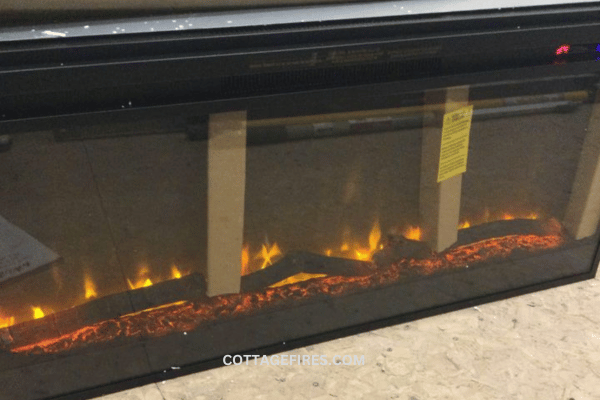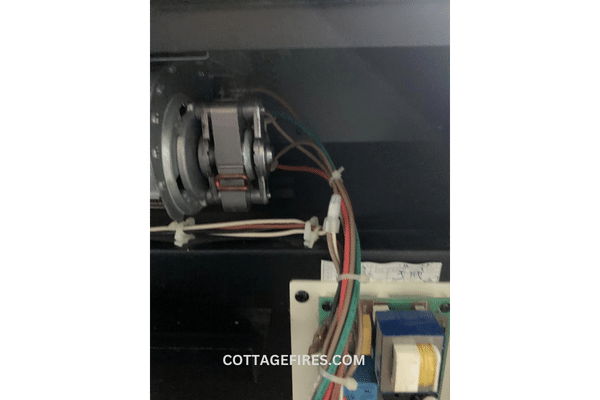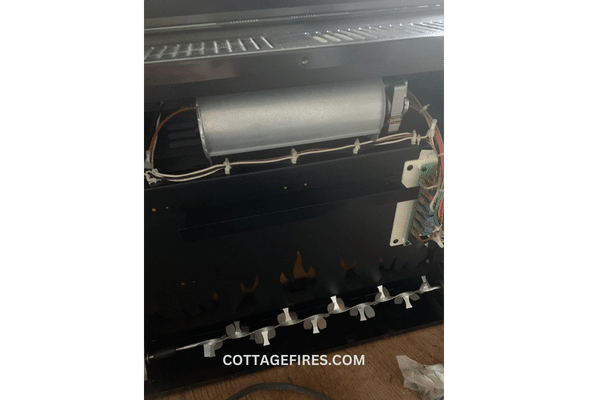Muskoka Electric Fireplace Troubleshooting

Muskoka electric fireplaces provide comfort and ambiance to any space. But like any appliance, they can experience technical issues like overheating, stopped working, sudden shut-offs, and flames not lighting up.
This guide covers all the common problems and solutions you need to troubleshoot your Muskoka electric fireplace
Muskoka Electric Fireplace Stopped Heating
Facing issues with your electric fireplace heater not operating can be frustrating, but a methodical approach to problem-solving is key. Whether due to user errors or technical malfunctions, understanding the possible causes is important
Your electric fireplace heater stopped heating due to incorrect operation or technical glitches like faulty electrical connections, loose wiring, defective safety switches, and improper placement. Additionally, blocked inlets or outlets, incorrect temperature settings, a malfunctioning blower, and faulty heating elements can contribute to the problem.
Solutions:
Here are concise solutions to address these concerns:
- Ensure the Main Switch is ON: Confirm that the main switch is turned ON to eliminate basic operational issues.
- Reset the Fireplace: Try resetting the fireplace by turning it off, disconnecting the power plug, waiting for 5 minutes, and plugging it back in to resolve minor glitches.
- Check Switch Settings: Ensure all three switches (Power, Low, High) are ON for optimal heat output.
- Thermostat Adjustment: Set the thermostat to a higher temperature than the room to prompt increased heat production.
- Maintain Cleanliness: Remove dust or debris around the fireplace to ensure unobstructed airflow.
- Inspect Inlet and Outlet: Confirm unobstructed airflow by checking for blockages in the fireplace’s inlet and outlet.
- Secure Wiring Connections: Tighten loose wiring connections to prevent disruptions in the electrical supply.

- Heating Element Replacement: Consider replacing a faulty heating element if other solutions prove ineffective.
Muskoka Electric Fireplace Keeps Shutting Off
You often turn on the Muskoka electric fireplace, which shuts down in 5 seconds or minutes. If you’re experiencing frequent shutdowns of your electric fireplace, it’s an even more frustrating interruption to your cozy moments.
Electric fireplaces can automatically shut off due to common issues like restricted airflow as l limited airflow prevents heat dissipation, overheating of the heating elements triggering safety shutoffs, blockages in the inlet and outlet vents disrupting proper circulation, and incorrect bulb wattage settings.
If light bulbs of too high wattage are used, they generate excessive heat, leading to automatic shutdowns as a protective measure.
Solutions:
- Firstly, unplug the fireplace and allow it to rest for a while to prevent overheating. This simple reset can resolve the issue.
- Ensure to clean the inlet and outlet of the unit for smooth airflow. Unobstructed airflow is crucial for optimal operation.
- Adjust the thermostat to a higher temperature than the current room to avoid premature shutdowns.
- Ensure all heating elements are free from debris and unblocked to maintain efficient heat production.
- Measure the wattage of the bulbs; if it’s excessively high, consider replacing the bulb to prevent overheating.
- Confirm that the fireplace is directly connected to the electrical source, avoiding using extension leads, which may cause interruptions.
Muskoka Electric Fireplace Doesn’t Turn On
A secure plug into a wall socket is essential for fireplaces to work properly. However, more than an unplugged cord can disrupt this fiery dance. Issues may stem from a tripped circuit breaker, blown fuse, defective power cord, insufficient voltage, or loose wiring.
Solutions:
- First, ensure the fireplace is securely plugged into the wall socket for power flow.
- Plug the fireplace into a standard outlet, with the voltage not exceeding 120V.
- Check and activate the main power button to breathe life into the hearth.
- Fix any loose wiring to restore the vital connection.
- Raise the thermostat to summon warmth in colder temperatures.
Muskoka Electric Fireplace Switch Doesn’t Work
The first step in troubleshooting the Muskoka electric fireplace where the switch isn’t working is to unplug the fireplace and open it up to access the inside. Inspect the switch for any signs of damage like charring or melting.
Then, inspect the circuit board for any similar damage. If the switch is the problem, unhook the wires from it and remove it. Take the switch to a hardware store and purchase a compatible replacement, ensuring the amperage ratings match. Install the new switch and reconnect the wires. Close up the fireplace and plug it back in. The new switch should operate properly.
If there is damage to the circuit board or other internal components, those must be repaired or replaced before the fireplace will work again.
Flame on Muskoka Electric Fireplace does not Light
Sometimes, an electric fireplace seems to turn on, but no flame appears. There are a few possible reasons for this:
First, double-check that the fireplace is properly plugged into a working electrical outlet. The fireplace may have a power button or switch that controls the flame; try turning this off and back on to reset it.
Next, inspect the lighting LED strip inside the fireplace. Any loose, faulty, or burnt-out bulbs will need to be replaced for the flame to operate. Loose wiring connecting the LED strip could also cause issues. Carefully check that all wires are securely attached.
If the flame still does not ignite after checking the power supply and lighting, there may be a problem with the electric igniter. Consult your owner’s manual on troubleshooting further, or contact a fireplace technician for service. Many ignition issues can be resolved with some basic checks and wire inspections.
Muskoka Electric Fireplace Makes Noise
Hearing squeaking or other odd noises from your electric fireplace can be concerning. However, in most cases, it simply indicates that routine maintenance is needed. Here are a few tips to address common causes of fireplace noises:
First, unplug the fireplace, then open the unit to access internal components like the blower motor. Thoroughly clean out any dust buildup and debris, which can cause friction and squeaking if allowed to accumulate.

Inspect the blower motor and mounts – improper installation or shifting over time can lead to contact with surrounding metal, resulting in vibration noises. Tighten mounts or adjust positioning as needed. Also, lubricate moving parts like fan bearings using the lubricant specified in the owner’s manual.
Check for any loose wiring connections or fasteners that may be rattling while the blower runs. Secure any loose components. Look for signs of wear on moving parts like fan blades and replace anything overly worn.
After full cleaning and inspection, reassemble the unit and test the operation. The squeaking should be diminished or resolved. If not, the blower motor may need professional servicing or replacement. With periodic fireplace maintenance, squeaking and other odd sounds can often be prevented.
